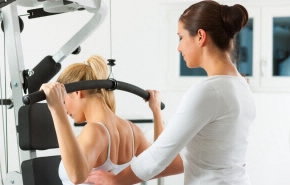The role of physical activity during menopause!
The time of menopause is different for every woman. Although the average age of natural menopause is 52, some women start the transition as soon as their early 40s. It is also important for menopausal women to recognize the importance of physical exercise during this transition period.
Menopausal women face challenges such as hot flashes, night sweat, insomnia and mood swings, to name just a few. These symptoms, which can occur either singly or combined, threaten to deteriorate the quality of life. During menopause the role of physical activity becomes prominent, not only because of the range of symptoms described above, but also because menopause increases the risk for cardiovascular disease, osteoporosis, bone density loss, depression and obesity (Freeman 2010; Guthrie et al. 2004). One scientific study suggests that as many as 60% of menopausal women are overweight (Milewicz, Bidzinska & Sidorowicz 1996). Multiple studies examining the association between obesity and menopausal symptoms show that women with elevated body mass index (BMI) report more severe symptoms than women with healthy BMI and that obese women run a greater risk of depression (Fernández-Alonso et al. 2010). In addition, sarcopenia (i.e. age-related muscle and strength loss) that is often experienced by menopausal women owing to the decline in estrogen is exacerbated by low levels of physical activity.


There is a conclusive body of research highlighting the health benefits of physical activity for middle-aged women. These benefits include not only improvements in brain function and functional capacity (muscle strength, muscle quality and balance) but also relief of somatic and psychological symptoms like anxiety and depression. Physical activity positively impacts menopausal symptoms and helps maintain a healthy BMI.
So see you at the gym ladies! For more personalized information, contact our experienced Personal Trainers.
Katharina Händler
Regional Fitness Manager
Holmes Place Austria